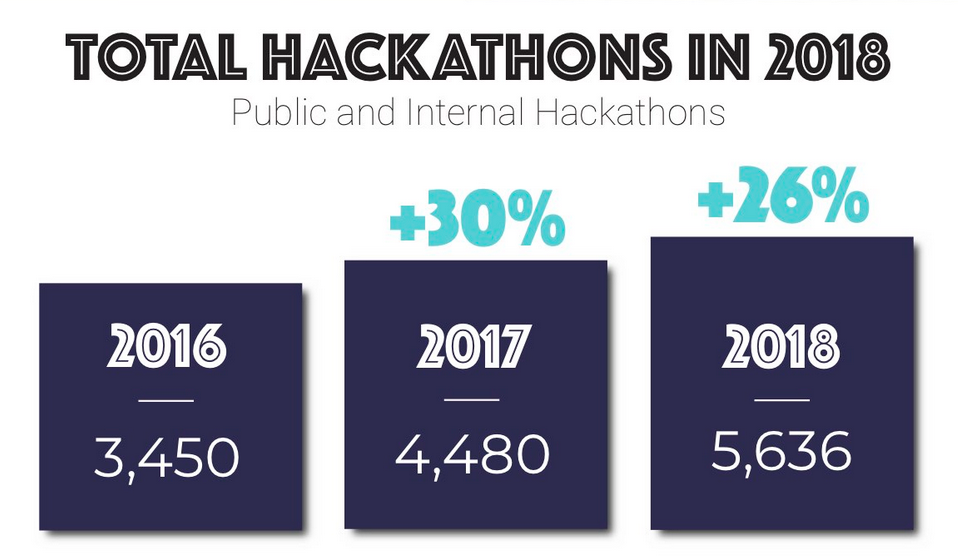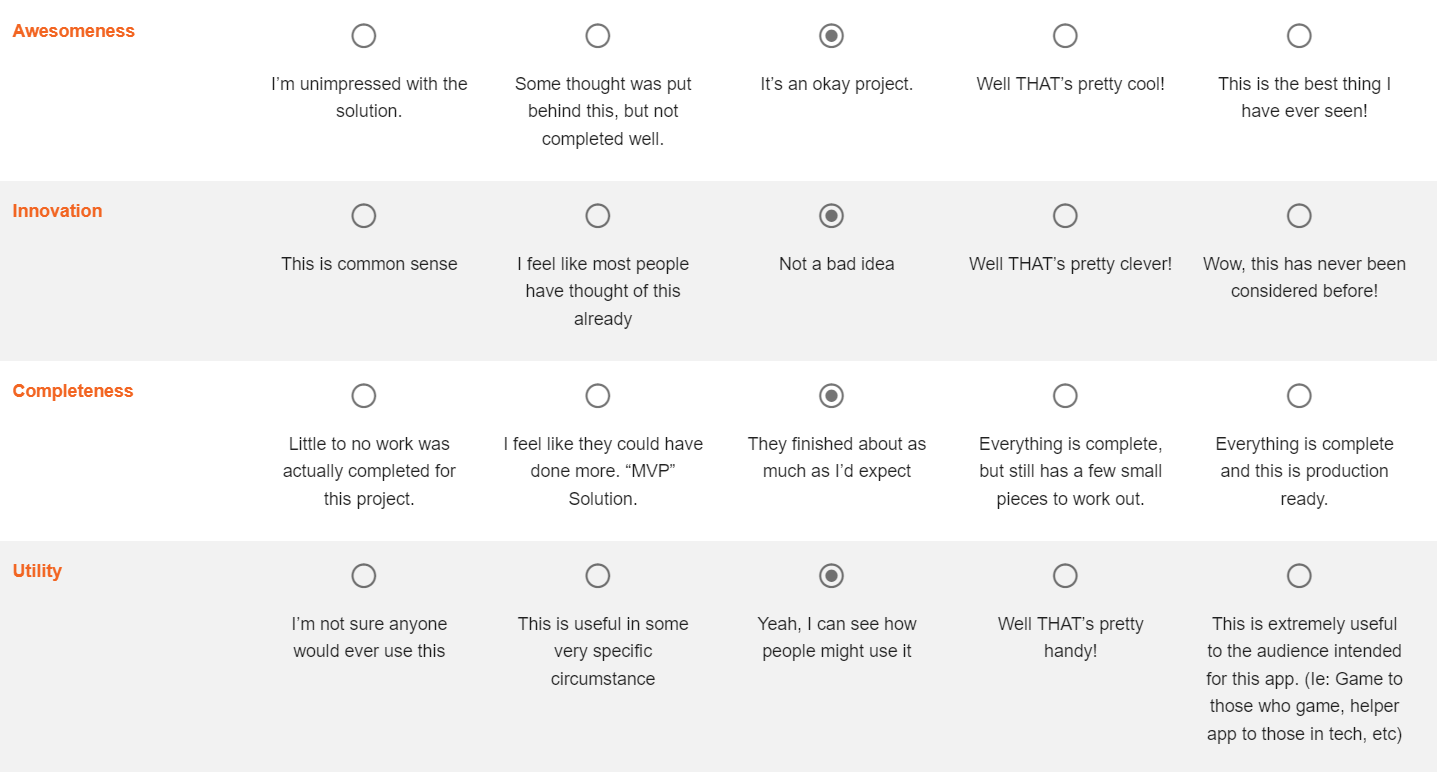 Rishi Sunak
Rishi Sunak
Rishi Sunak, the Prime Minister of the United Kingdom, had a problem. The United Kingdom was facing an overwhelming backlog of 138,052 undecided asylum cases, and both The Independent and The Financial Times had reported the annual cost of Britian’s asylum system had soared to $4.6 billion. In response to this growing crisis, the Prime Minister committed to cleaning up the backlog. With the patience of asylum seekers and watchdog organizations fraying, the Prime Minister needed an innovative solution to addressing the backlog and needed it fast. So, he decided to host a hackathon.
In May 2023, the U.K. Home Office gathered data scientists from across government agencies and the private sector. Their goal was to spend three days hacking to discover a speedier method of processing applications using A.I. To be clear, the U.K. government was able to leverage a hackathon to develop proposals in three days to address a problem at the level of nations. This speaks to the how far hackathons have come in terms of adoption and benefits.
Recently, with this story in mind, I was able to participate in ACV’s Fall Hackathon. ACV Engineering designs, organizes, and hosts these hackathons, and these events are one of the most anticipated and enjoyed events of the year. The combination of collaboration, competition, and innovation has created an experience that not only strengthens the bonds between participants but also pushes the boundaries of what ACV’s talent can do.
This article will discuss what hackathons are and where they came from. We will also look at the benefits hackathons offer and why companies should consider hosting their own. In addition, we will take a deep dive into how ACV structures their hackathon as they are going through a rapid global expansion. Finally, we will look at feedback from participants of ACV’s most recent hackathon to see what makes a great hackathon.
What are Hackathons?
The word hackathon is a combination of the words hacking and marathon. It is an event where people engage in rapid and collaborative engineering to improve or build new software programs and hardware. The challenge is that the participants must accomplish their goal in a short amount of time, typically 24 or 48 hours. Each participant is striving to create functioning software or hardware by the end of the event.
The world’s first hackathon originated on June 4th, 1999 and was hosted by OpenBSD in Calgary, Canada. Hackathons started to gain widespread popularity in the late 2000s as the benefits of them became more well known. By 2018, there were 5,636 public and internal hackathons, up 40% from 2016. By 2023, more than 80% of Fortune 100 companies utilized hackathons as a strategy to fuel innovation.

The Benefits of Hackathons
What accounts for this rapid adoption of hackathons? Hackathons provide benefits both for the corporate sponsor of the event as well as the participants.
For corporations, hackathons:
1. Provide a way to instill entrepreneurial skills within their talent pool.
2. Provide an opportunity for fresh perspectives through innovation.
3. Provides good public relations and a more engaged workforce.
For participants, hackathons:
1. Provide an opportunity to unleash creativity and chase innovative ideas.
2. Provide an opportunity to gain experience in both hard and soft skills.
3. Provide networking opportunities.
4. Provide recognition and help build self-confidence.
Corporate Benefits
Studies have shown that the impact of hackathons can be substantial. The research paper, “The Effects of Hackathons on the Entrepreneurial Skillset and Perceived Self-Efficacy as Factors Shaping Entrepreneurial Intentions“ found that hackathons are an effective entrepreneurial learning methodology. In addition, hackathons also allow employees to gain entrepreneurial skills and self-confidence much faster using fewer resources than more traditional means for instilling these skills. This translates to a more empowered and engaged workforce with truly little additional cost to the business.
In terms of new opportunities born from innovation, it is well known that the practice of building diverse teams to collectively solve problems yields strong business value and creates a culture of invention. Well known products and companies were born from hackathons including Facebook’s Meta Apps and Twitter (recently rebranded to X). The book, “Things a Little Bird Told Me: Confessions of the Creative Mind” by Biz Stone talks about a hackathon hosted by a failing podcasting company called Odeo. At this hackathon, Biz Stone and Jack Dorsey put together the rough prototype that became Twitter. For business that are looking to create new revenue streams or strengthen their business model, hackathons can provide the spark that gets the ball rolling.
Hackathons can help promote good public relations. Participants who take to social media to celebrate their latest invention or share their enthusiasm for the hackathon shine a positive light on the companies that host them. An example of this is the LinkedIn Post that Sathish Vaidyanathan, Vice President and Head of India at ACV, created during ACV’s Fall Hackathon.
Finally, external hackathons create a new recruitment funnel while internal ones increase employee motivation. Companies use external hackathons as scouting opportunities for high potential talent. Internal hackathons give employees the chance to explore their ideas, leading to a higher degree of engagement and a greater sense of empowerment to improve their own work situation. This culture of innovation and empowerment motivates employees to strive for more.
Participant Benefits
One of the biggest benefits for participants is the time to explore their wildest ideas and unleash their creativity. This helps break up the monotony of their day-to-day work while also stimulating innovation. Hackathons thrive on unconventional thinking and the more participants engage in this thinking the better they get at it. This skill will help participants stand apart from the crowd when it comes to new job opportunities and career advancement.
Another great reason for folks to participate in a hackathon is skill enhancement. In terms of soft skills, key abilities like collaboration, communication, and negotiation are all stressed during a hackathon. In terms of hard skills, hackathons provide an opportunity for participants to use a technology they do not use in their normal work. This skill enhancement will help participants build resumes, stay up to date on latest trends, and safeguard their careers. From my own experience in ACV’s hackathon, I got a chance to work more with ChatGPT, used a new programming language, Ruby, and learned about a new AI video transcription service provide by Descript.
In terms of career growth, hackathons also provide critical networking opportunities. Even internal hackathons can provide participants the chance to collaborate with people outside their normal team. At ACV I was able to collaborate with an engineer from our Infrastructure team, an engineer from our Identity and Organizations team, and a UX designer. Prior to the hackathon, I had not had an opportunity to collaborate with these folks. I feel like I have a better appreciation of their talents now that I have been able to see them in action.
Finally, participants can get additional exposure for their work beyond what they may accomplish as part of their normal job. Presenting winning hackathon projects to higher ups and executives of an organization helps participants get their name recognized. For participants seeking a new job, showing off a hackathon project can be a great interviewing strategy. Listing hackathons on resumes indicates to prospective employers that the person is both skilled and enthusiastic about engineering and technology.
How ACV Structures a Hackathon
ACV has been having internal hackathons for years now and have adjusted the approach as the company grew from a small engineering organization collocated in Buffalo, NY to an engineering organization of hundreds spread across multiple global locations including Canada, the United States, Europe, and India. Taking this into account, ACV structured the fall hackathon and executed it across multiple time zones with a focus on fairness.
ACV engineers design, organize, and execute the hackathons. The participants, and only the participants, do the judging. Participants have 24 hours to build their project and record their presentations. The hackathon format breaks the 24 hours up across three 8-hour days to help the participants maintain a healthy work life balance. The hackathon I participated in kicked off on a Monday morning at 9am and the first day of hacking ended at 5pm. Tuesday repeated this format, and the hacking portion of the event ended on Wednesday at 5pm local time.
In terms of format, there is no limitation as to what the engineers can choose to be their project. The project does not need to relate to ACV’s business at all. The reasoning is that innovative ideas can come from anywhere. If we were to limit the scope of what projects can be, we limit the potential for creativity. Remember that hackathons are about unconventional thinking and fun, so limiting the projects would be counterproductive.
In terms of prizes, ACV provides a budget and the engineers crowd source what the prizes should be. The goal is to have a prize list that will motivate engineers to do their best. The organizers achieve this goal by having the engineers put the prize list together. Each participant stack ranks the prizes available. For example, if the prizes are A, B, C, D, E, a participant may order their personal prize list like: E, B, A, D, C.
With the hacking portion completed, the judging begins. Before this hackathon, presentations and judging were handled as one giant meeting with live presentations. As the hackathon needed to scale to include international offices in different timezones, the asynchronous pre-recorded presentation format was adopted. By moving to a pre-recorded format for presentations, the participants were able to judge each team in their own time. Each office also hosted watch parties for the hackathon I participated in.
The participants judged the teams on a scale from 0 to 4 on five categories: awesomeness, innovation, completeness, utility, and difficulty. Once the participants have judged all the teams and tallied all the scores, they announce the winners.

Which prize a person receives is determined by three things:
1. where their team placed overall
2. their position on their team
3. their personal prize ordering
The first person on the first-place team gets their top choice. The second person on the first-place team gets their top choice if the first person did not pick it. Once everyone on the first-place team has a prize, the second-place team goes, starting with the first person on the second-place team. An example of prize allocation could be that the recipient wants prizes in the order E, B, A, D, C, but by the time it is their turn, E, D, and C are gone. This recipient would get prize B. This continues until the organizers have distributed all the prizes.
Once all prizes are allocated, the organizers then purchase the prizes in the same geolocation as the recipient. Note that the organizers do not purchase the prizes ahead of time to avoid having to send prizes over borders and to avoid cases where local laws or custom would not allow a prize. Once all the organizers have ordered all the prizes and the recipients have received them, the organizers then gather feedback and start planning for the next hackathon.
What Makes a Great Hackathon
Now that we have a structure for the hackathon, how successful is this structure at accomplishing the goal of creating an event that fosters collaboration, innovation, and enjoyment? Here is what five of the participants thought.
Dan Conley is a Staff Software Engineer and one of the organizers of the most recent hackathon. Dan appreciates the conversations the projects spark. During the office watch party in Buffalo, folks would talk about the projects during judging making the experience fun and engaging.
Kirsten Orlando is a Product Manager for the Transportation team and believes the hackathon is a unique way to bring people together and generate innovative ideas and connections. Her project allowed her to work with teammates from ACV’s office in Chennai, India on a critical problem facing the business.
Sathish Vaidyanathan is one of ACV’s Vice Presidents and leads the India office. Sathish celebrates the global event for its ability to nurture collaboration among teammates from around the world. “The hackathons allow teammates to explore modern technologies, enhance their business acumen, and highlights ACV’s shared commitment to customer-centricity.”
Joel Harmon is a Senior Engineer on the Marketplace team and a hackathon committee member. He appreciates the subtle way the hackathon encourages participants to gain experience at giving technical presentations. He also likes how hackathons use play to foster innovation.
Camille Kaniecki is a Senior Engineer on the Identity & Orgs team and hackathon committee member. Camille welcomes the break hackathons provide. Camille thinks of it like, “backpedaling on a bike – you backpedal to keep moving your legs while you coast; to activate muscles you do not normally use and allow the main ones to recover. Then, you can go right back to pedaling normally to propel yourself forward.” The mind reset helps her return to her regular workload feeling refreshed.
The Lasting Impact of Hackathons
As we wrap up our exploration of hackathons, these events are more than just coding marathons; they are vibrant ecosystems of creativity, collaboration, and innovation. Corporate sponsors enjoy a more well-rounded workforce, fresh perspectives, and new recruitment opportunities. Participants hone their technical skills, build invaluable connections, and earn recognition and self-confidence.
The benefits extend beyond the event itself. Groundbreaking ideas and startups, like Twitter, have emerged from the intense brainstorming and problem-solving that characterize hackathons. They serve as a launchpad for aspiring entrepreneurs and a source of fresh perspectives for established organizations.
Whether you are the Prime Minister of the United Kingdom, a CEO of a Fortune 100 company, or a software engineer just starting their career, hackathons may be the answer to the challenges you are facing. Give them a chance, you will not be disappointed.
For more information regarding how hackathons encourage collaboration through play, I highly recommend the article, “Hackathons and Context Switching: Why You Can’t Innovate Without Play”.
















